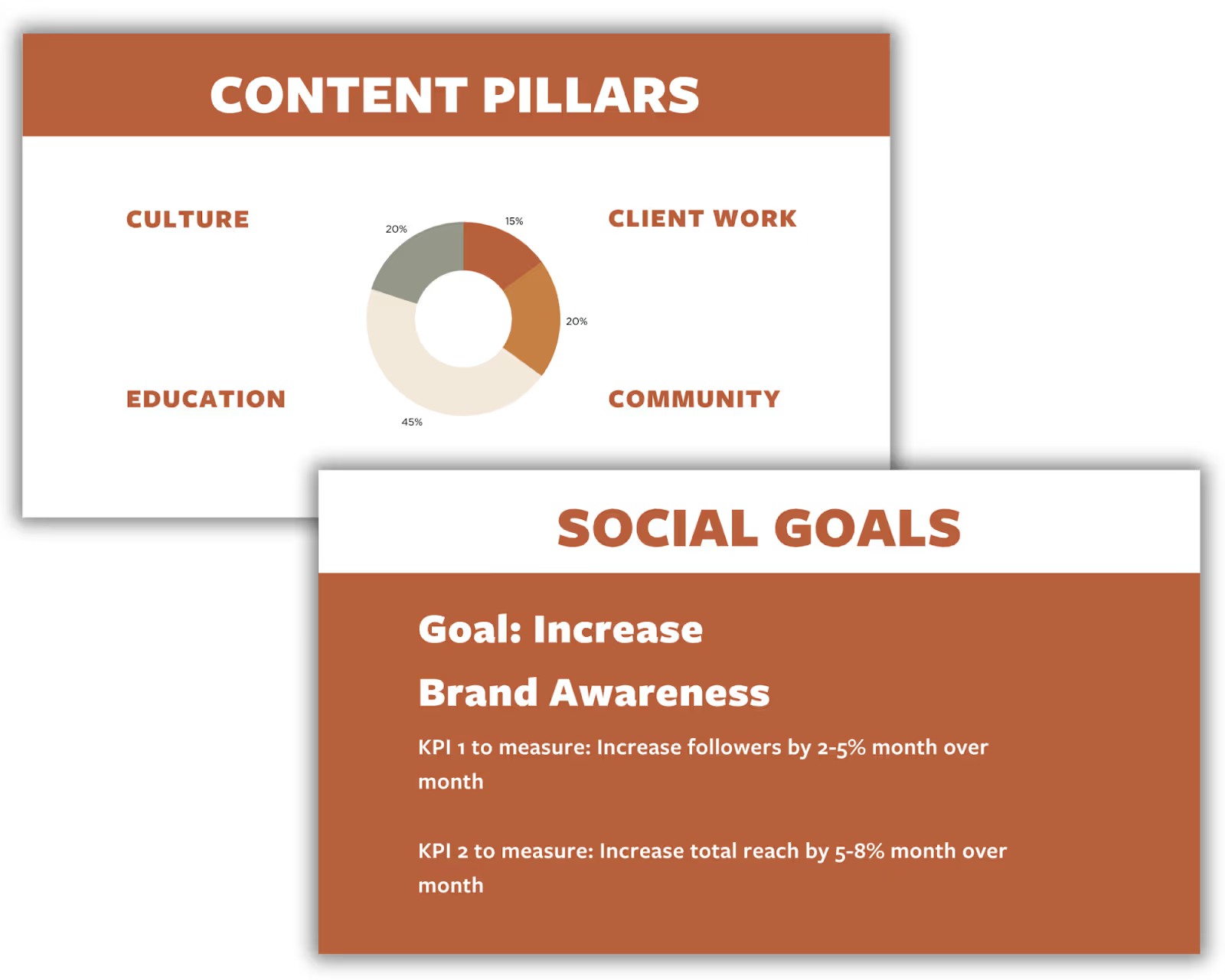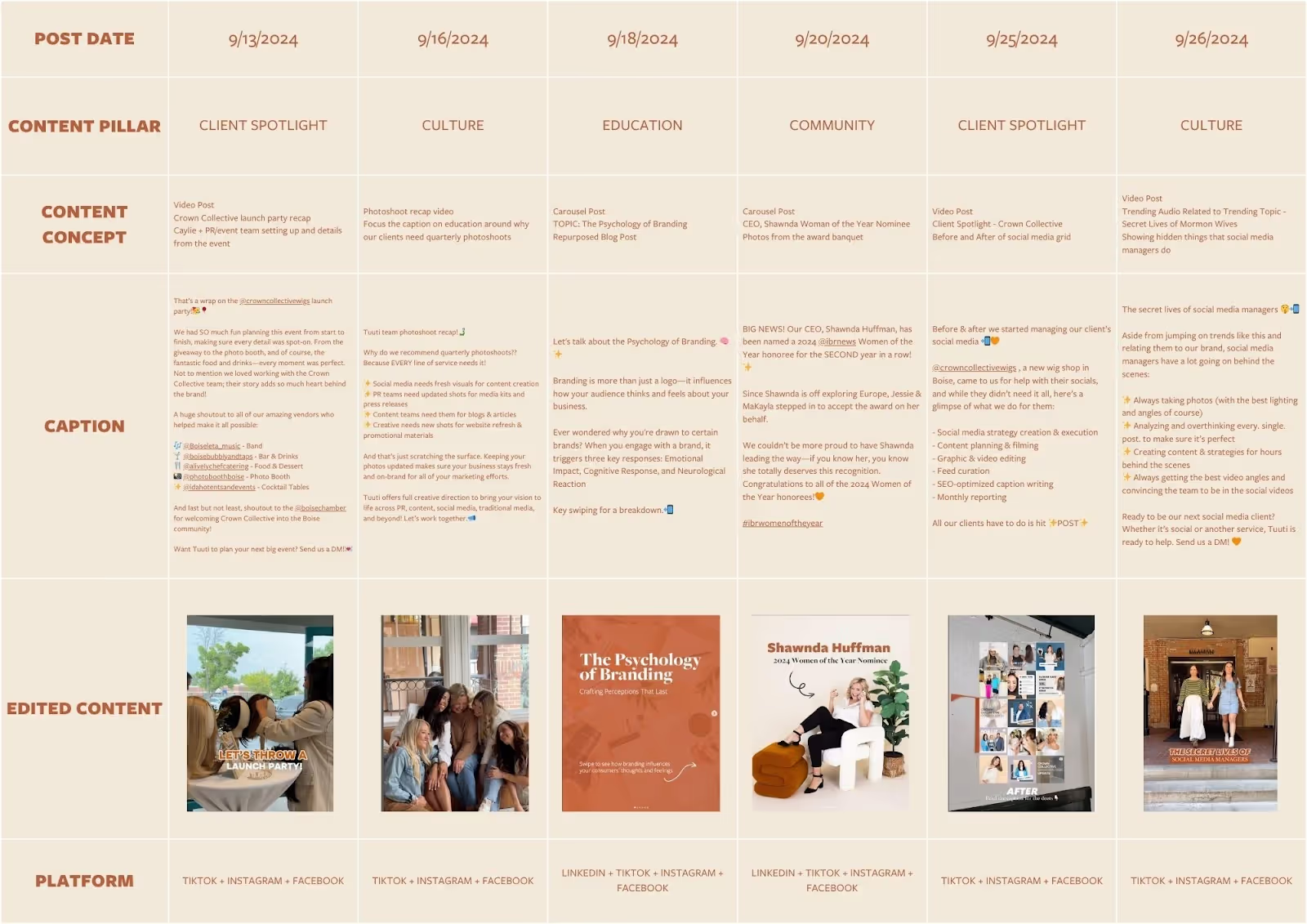If you want to be a legitimate brand, especially with younger consumer age groups, having active social media accounts is a must. Social media can help with growing brand awareness, building brand loyalty, and driving traffic to your website.
Like anything, it’s important to do it right. Social media is much more involved than throwing a post up whenever the mood strikes you. To really make an impact, you need a game plan. This is where a social media content calendar and strategy come into play.
A social media strategy is the foundation for your social media success. It guides who your audience is, what kind of content to create, and what messaging you want to share. Meanwhile, a social media content calendar acts as your roadmap, outlining when and where to share that content. Together, they help brands streamline efforts, maximize engagement, and achieve marketing goals.
A social media strategy covers several areas, including:
Below are a few pages from our own social media strategy to give you an example. Notice how we break down our content pillars into four sections: culture, education, client work, and community. We also outlined our goals for the year and specific metrics to measure our success.

This stage involves a ton of research, but it’s so important to make sure you’re being effective on social media — from talking to the right people, to sharing the right type of content, to achieving the goals that matter most to you.
Typically, we suggest giving your social media strategy a refresh once a year to keep it in sync with your business goals and what’s happening in the market. But don’t stop there! It’s important to tweak it a bit throughout the year, especially when you have new product launches or exciting lines of service to promote. This way, you can stay relevant and connect with your audience in a way that feels fresh and engaging.
Once you have a social media strategy in place, you can move on to creating a social media content calendar!
A social media content calendar has so many benefits, but here’s some top ways it will help you out:
Here’s the steps we recommend when working to create a social media content calendar:
Below is a social media content calendar example, courtesy of the team here at Tuuti. As you can see, it outlines post dates, content pillars, content concepts, captions, edited content, and platforms. This content calendar format you can replicate for your own brand. In the long-run, you will want to build out your calendar at least 90 days in advance.

To make an impact on consumers today, your social media accounts need to be on point. Overall, this means being more intentional about when you post, where you post, what type of content, how frequently, and so on. Whether your brand is new to social media, or you’ve been around for years, it’s never too late to dig deep into your social media strategy and calendar. Embrace the process and stay flexible, and you will be amazed to see what happens next!
Want help developing your social media strategy and calendar? For smaller marketing teams, it can be hard to prioritize the time for a strategy and content calendar when social media often comes as an afterthought. That’s where Tuuti comes in! We create tailored social media strategies and detailed content calendars that your team can easily follow and execute, saving you time while making sure your brand stays consistent and visible on all platforms. Reach out to us to learn more!